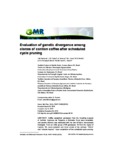Please use this identifier to cite or link to this item:
http://www.alice.cnptia.embrapa.br/alice/handle/doc/1040830Full metadata record
| DC Field | Value | Language |
|---|---|---|
| dc.contributor.author | DALCOMO, J. M. | pt_BR |
| dc.contributor.author | VIEIRA, H. D. | pt_BR |
| dc.contributor.author | FERREIRA, A. | pt_BR |
| dc.contributor.author | LIMA, W. L. | pt_BR |
| dc.contributor.author | FERRÃO, R. G. | pt_BR |
| dc.contributor.author | FONSECA, A. F. A. da | pt_BR |
| dc.contributor.author | FERRAO, M. A. G. | pt_BR |
| dc.contributor.author | PARTELLI, F. L. | pt_BR |
| dc.date.accessioned | 2016-03-14T11:11:11Z | pt_BR |
| dc.date.available | 2016-03-14T11:11:11Z | pt_BR |
| dc.date.created | 2016-03-14 | pt_BR |
| dc.date.issued | 2015 | pt_BR |
| dc.identifier.citation | Genetics and Molecular Research, v. 14, n. 4, p. 15417-15426, 2015. | pt_BR |
| dc.identifier.uri | http://www.alice.cnptia.embrapa.br/alice/handle/doc/1040830 | pt_BR |
| dc.description | Coffea canephora genotypes from the breeding program of Instituto Capixaba de Pesquisa e Extensão Rural were evaluated, and genetic diversity was estimated with the aim of future improvement strategies. From an initial group of 55 genotypes, 18 from the region of Castelo, ES, were selected, and three clones of the cultivars ?Vitória? and ?robusta tropical.? Upon completion of the scheduled cycle pruning, 17 morphoagronomic traits were measured in the 22 genotypes selected. The principal components method was used to evaluate the contributions relative to the traits. The genetic dissimilarity matrix was obtained through Mahalanobis generalized distance, and genotypes were grouped using the hierarchical method based on the mean of the distances. The most promising clones of Avaliação Castelo were AC02, AC03, AC12, AC13, AC22, AC24, AC26, AC27, AC28, AC29, AC30, AC35, AC36, AC37, AC39, AC40, AC43, and AC46. These methods detected high genetic variability, grouping, by similarity, the genotypes in five groups. The trait that contributed the least to genetic divergence was the number of leaves in plagiotropic branches; however, this was not eliminated, because discarding it altered the groups. There are superior genotypes with potential for use in the next stages of the breeding program, aimed at both the composition of clonal variety and hybridizations | pt_BR |
| dc.language.iso | eng | eng |
| dc.rights | openAccess | eng |
| dc.title | Evaluation of genetic divergence among clones of conilon coffee after scheduled cycle pruning. | pt_BR |
| dc.type | Artigo de periódico | pt_BR |
| dc.date.updated | 2016-03-21T11:11:11Z | pt_BR |
| dc.subject.thesagro | Coffea Canephora | pt_BR |
| dc.subject.nalthesaurus | Clones | pt_BR |
| dc.subject.nalthesaurus | Genetic improvement | pt_BR |
| dc.subject.nalthesaurus | Multivariate analysis | pt_BR |
| riaa.ainfo.id | 1040830 | pt_BR |
| riaa.ainfo.lastupdate | 2016-03-21 | pt_BR |
| dc.contributor.institution | Instituto Federal do Espírito Santo; Universidade Estadual do Norte Fluminense Darcy; UFES; Instituto Federal do Espírito Santo; INCAPER; AYMBIRE FRANCISCO A DA FONSECA, SAPC; MARIA AMELIA GAVA FERRAO, SAPC; UFES. | pt_BR |
| Appears in Collections: | Artigo em periódico indexado (SAPC)  | |
Files in This Item:
| File | Description | Size | Format | |
|---|---|---|---|---|
| Evaluationofgeneticdivergence.pdf | 256,88 kB | Adobe PDF |  View/Open |









